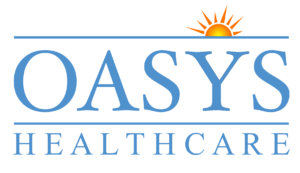Understanding the Slow Start of the Medical Equipment Industry in 2024
The medical equipment industry, a cornerstone of modern healthcare, faced a surprisingly slow start in 2024. This unexpected sluggishness raised questions among industry stakeholders and observers alike. To understand why the industry began the year on a slow note and when it is expected to pick up, it is essential to examine various influencing factors, including economic conditions, supply chain issues, technological advancements, and regulatory changes.
Economic Conditions and Market Uncertainty
One of the primary reasons for the sluggish start in the medical equipment industry in 2024 was the broader economic uncertainty. Global economies were still grappling with the aftereffects of the pandemic, inflationary pressures, and geopolitical tensions. These factors contributed to a cautious approach from healthcare providers and institutions regarding large capital expenditures.
- Inflation and Budget Constraints: Inflationary pressures led to increased costs for raw materials, manufacturing, and logistics. Healthcare institutions faced tighter budgets and higher operational costs, making them more hesitant to invest in new medical equipment.
- Economic Recovery: Although economies were recovering, the pace was uneven across different regions. Countries with slower recovery rates saw reduced spending in healthcare infrastructure and medical equipment.
- Geopolitical Tensions: Ongoing geopolitical issues, such as trade disputes and conflicts, affected global supply chains and market stability. These tensions created an unpredictable business environment, further discouraging significant investments in medical equipment.
Supply Chain Disruptions
Supply chain issues have been a significant challenge for the medical equipment industry since the onset of the COVID-19 pandemic. Despite efforts to stabilize, 2024 saw continued disruptions affecting the industry’s performance.
- Component Shortages: Critical components and raw materials for medical devices continued to be in short supply. Semiconductor shortages impacted the production of advanced medical equipment.
- Logistics Challenges: Transportation bottlenecks and increased shipping costs delayed the delivery of medical equipment. This was especially problematic for time-sensitive and high-demand products.
- Dependency on Global Supply Chains: The medical equipment industry relies heavily on global supply chains. Any disruption in one part of the world can have ripple effects, leading to production delays and increased costs.
Technological Advancements and Adoption Rates
While technological advancements are generally a boon for the medical equipment industry, the rapid pace of innovation can also pose challenges. In 2024, the industry faced a paradox where the fast evolution of technology created both opportunities and hesitations.
- Rapid Technological Changes: Innovations in medical technology, such as AI-powered diagnostic tools, telemedicine, and advanced imaging systems, have been accelerating. However, the rapid pace of these advancements sometimes leads to a wait-and-see approach among healthcare providers who are uncertain about investing in technologies that might soon be outdated.
- Integration Challenges: New technologies often require significant integration with existing systems. Healthcare providers may delay purchases until they are confident in the seamless integration of new equipment with their current infrastructure.
- Regulatory Hurdles: Advanced medical technologies often face stringent regulatory scrutiny. The time required to gain approvals and certifications can delay the availability and adoption of new equipment.
Regulatory and Policy Changes
Regulatory environments significantly impact the medical equipment industry. In 2024, several policy changes and regulatory updates contributed to the industry’s slow start.
- New Compliance Requirements: Changes in regulatory requirements, such as updates to the FDA’s approval processes or new standards for data security and patient privacy, necessitated adjustments from manufacturers. Compliance with these new regulations often requires additional resources and time.
- Healthcare Policy Shifts: Shifts in healthcare policies, particularly those related to reimbursement and funding, influenced the purchasing decisions of healthcare providers. Uncertainty around future policies led to delayed investments in new equipment.
- Global Regulatory Variations: Differences in regulatory standards across countries created challenges for manufacturers aiming to expand internationally. Navigating these variations required additional planning and slowed down market entry for new products.
When Will the Industry Pick Up?
Despite the slow start, there are optimistic signs that the medical equipment industry will pick up momentum as the year progresses. Several factors are expected to drive this recovery.
- Economic Stabilization: As global economies continue to stabilize, healthcare budgets are likely to recover. This recovery will enable healthcare providers to resume investments in new equipment and technologies.
- Improved Supply Chains: Efforts to strengthen and diversify supply chains are expected to bear fruit in the latter half of the year. Increased production capacity and improved logistics will help alleviate component shortages and delivery delays.
- Technological Maturity: As new technologies mature and demonstrate their effectiveness, healthcare providers will gain confidence in investing in advanced equipment. The integration of AI, telemedicine, and other innovations will become more seamless, driving adoption.
- Regulatory Clarity: Ongoing adjustments to regulatory frameworks will eventually lead to greater clarity and stability. Manufacturers will be better equipped to navigate compliance requirements, reducing delays in product launches.
- Policy Support: Supportive healthcare policies and funding initiatives from governments will boost the industry. Investments in healthcare infrastructure and modernization programs will create demand for new medical equipment.
Conclusion
The slow start of the medical equipment industry in 2024 can be attributed to a confluence of economic uncertainties, supply chain disruptions, rapid technological advancements, and regulatory changes. However, the industry is poised for recovery as these challenges are addressed. Economic stabilization, improved supply chains, technological maturity, regulatory clarity, and supportive policies will collectively drive the industry’s growth in the coming months.
Stakeholders in the medical equipment industry, including manufacturers, healthcare providers, and policymakers, must remain adaptable and forward-thinking. By understanding the underlying causes of the slow start and preparing for the anticipated recovery, they can navigate the current challenges and capitalize on the opportunities that lie ahead. The resilience and innovation that define the medical equipment industry will undoubtedly lead to a strong and vibrant future.

